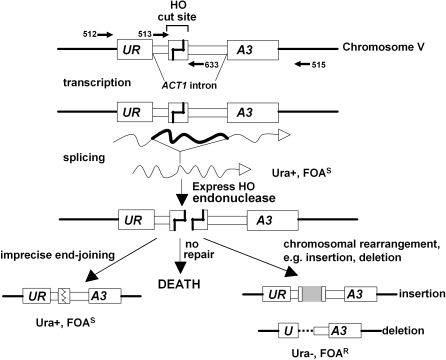Figure 1. The experimental system.
Structure of the URA3 allele on S. cerevisiae chromosome V used for these experiments. The position of various oligonucleotide primers (numbers and half arrows) used for PCR and sequencing are shown. The ACT1 intron placed into URA3 is normally spliced, resulting in uracil prototrophy (Ura+) and sensitivity to the drug FOAS. After creating a DSB within the engineered ACT1 intron with HO endonuclease, cells either die, are repaired in a way allowing normal splicing, or are repaired in a way that prevents splicing. The latter situation leads to a phenotype of uracil auxotrophy (Ura−) and resistance to 5-FOA (FOAR).

